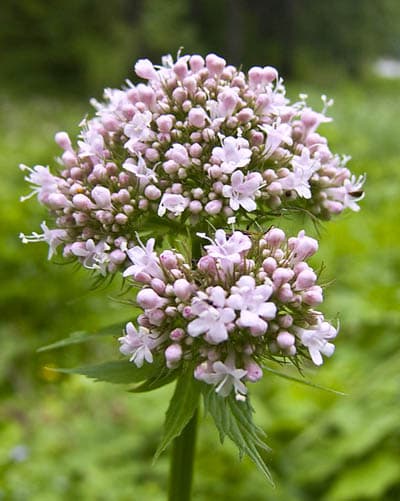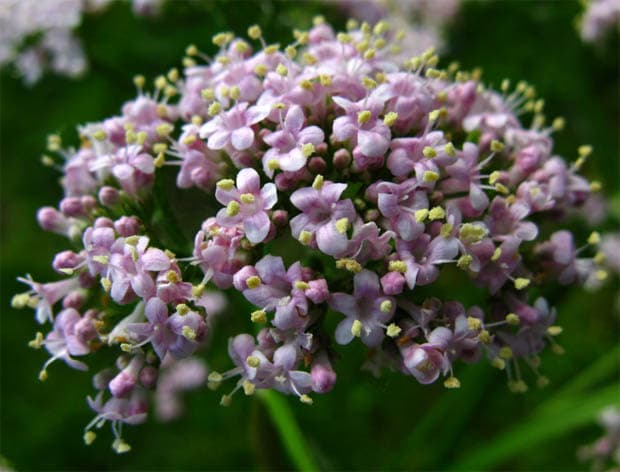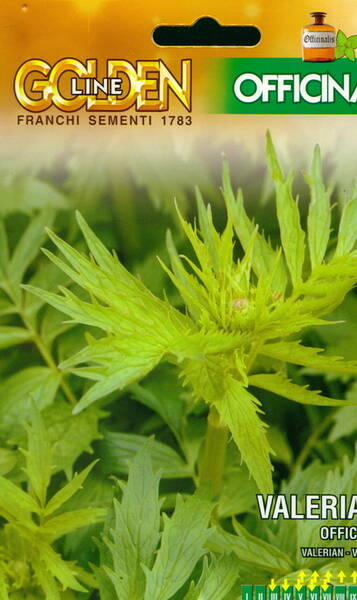The plant prefers light (sandy), medium (loamy) and heavy (clay) soils. The plant prefers acid, neutral and basic (alkaline) soils. It cannot grow in the shade. It requires moist soil.
Habitats and Possible Locations: Woodland, Sunny Edge, Dappled Shade.
Medicinal Uses: Disclaimer Antispasmodic; Carminative; Diuretic; Hypnotic; Nervine; Sedative; Stimulant.
Valerian is a well-known and frequently used medicinal herb that has a long and proven history of efficacy. It is noted especially for its effect as a tranquilliser and nervine, particularly for those people suffering from nervous overstrain. Valerian has been shown to encourage sleep, improve sleep quality and reduce blood pressure. It is also used internally in the treatment of painful menstruation, cramps, hypertension, irritable bowel syndrome etc. It should not be prescribed for patients with liver problems.

Externally, it is used to treat eczema, ulcers and minor injuries. The root is antispasmodic, carminative, diuretic, hypnotic, powerfully nervine, sedative and stimulant. The active ingredients are called valepotriates, research has confirmed that these have a calming effect on agitated people, but are also a stimulant in cases of fatigue.
The roots of 2 year old plants are harvested in the autumn once the leaves have died down and are used fresh or dried. The fresh root is about 3 times as effective as roots dried at +40°C (the report does not specify if this is centigrade or fahrenheit), whilst temperatures above +82°C destroy the active principle in the root. Use with caution, see the notes above on toxicity.
Other Uses Compost; Essential; Liquid feed; Repellent. The plant yields about 1% of an essential oil from the roots. It is used in perfumery to provide a "mossy" aroma, though the scent is considered to be disagreeable by many people. The dried roots are also placed in linen cupboards and clothes drawers in order to scent the clothes. The dried root attracts rats and cats, it can be used as a bait to lure them away from other areas.
An ingredient of QR herbal compost activator. This is a dried and powdered mixture of several herbs that can be added to a compost heap in order to speed up bacterial activity and thus shorten the time needed to make the compost. The plant can also be used to make a very good liquid plant feed. It attracts earthworms. The leaves are very rich in phosphorus.
A very easily grown plant, it succeeds in ordinary garden soil, preferring a rich heavy loam in a moist site. Thrives in full sun or in partial shade, doing well in light woodland. A polymorphic species, the more extreme variations are given specific status by some botanists. Valerian is often grown in the herb garden and also sometimes grown commercially as a medicinal herb. When grown for its medicinal root, the plant should not be allowed to flower. The flowers and the dried roots have a strong smell somewhat resembling stale perspiration. Cats are very fond of this plant, particularly the powdered root. Once a cat has discovered a plant they will often destroy it by constantly rolling over it.
The dried root also attracts rats and can be used as a bait in traps. A good companion for most plants.
Propagation Seed: sow spring in a cold frame and only just cover the seed because it requires light for germination. Prick out the seedlings into individual pots when they are large enough to handle and plant out into their permanent positions in the summer if sufficient growth has been made. If the plants are too small to plant out, grow them on in the greenhouse or frame for their first winter and plant them out early in the following summer.
Division in spring. Larger divisions can be planted out direct into their permanent positions. We have found that it is best to pot up smaller divisions and grow them on in light shade in a greenhouse or cold frame until they are growing away well. Plant them out in the summer or the following spring.

Common valerian, garden valerian, fragrant valerian. Bot. syn.: Valeriana baltica Pleijel.












